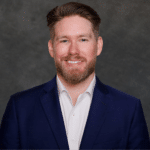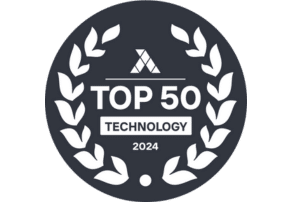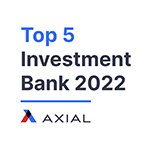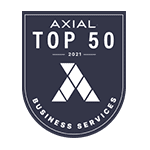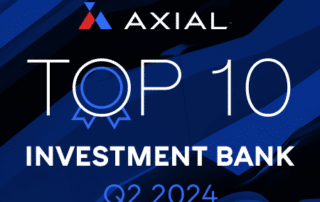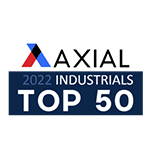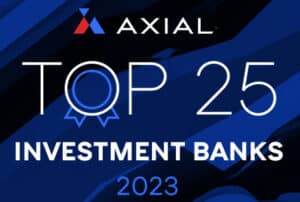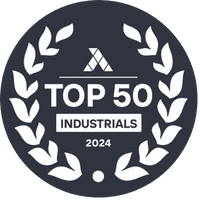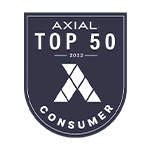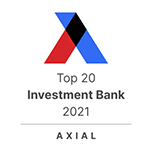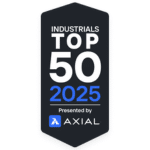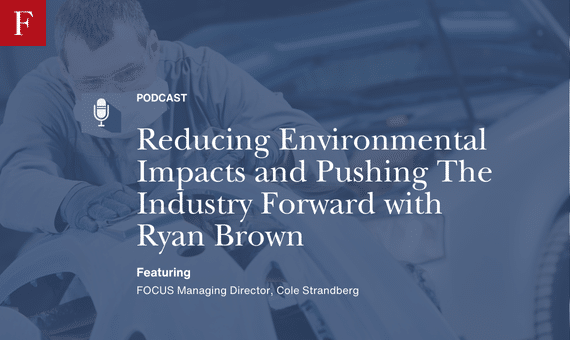
Reducing Environmental Impacts and Pushing The Industry Forward with Ryan Brown
On this episode, Cole Strandberg chats with Ryan Brown, Western Technical Manager at AkzoNobel, and a leader in helping body shops implement smarter, greener, and more efficient practices through product innovation and hands-on support. We talk about why sustainability is a business imperative, how AkzoNobel is helping shops reduce their environmental impact, and the role of new product innovations—like Autowave Optima—in pushing the industry forward. Whether you’ve been following the series closely or you’re just jumping in, this conversation will leave you with a clear picture of what it means to go green—and how to take action in your shop.
Cole Strandberg: Looking forward to an awesome conversation. We just got to connect really before the show for our pre show call. But yours is a name I see everywhere. I hear everywhere. So before we dive into our primary topic today, would love to hear about you in your own words.
Ryan Brown: OK. Yeah, I get kind of a unique perspective with the company because I actually started out as a customer at one time as a in the collision industry. And so I started from the customer point of view and got a chance to start working for the company as an instructor at a training center, then as a consultant out in California. And now I’ve covered the Western United States as a technical manager for the Western US. So I’ve kind of seen it from both sides of the spectrum. And I think that gives me kind of a unique point of view on a lot of things that we do.
Cole Strandberg: No question about it. Love that different and unique perspective. No question. So you’re with Axel Nobel. This theme, of course, this month here is sustainability. And my viewpoint on sustainability and what that even means has shifted over the month with different conversations we’ve had. How do you and how does AXO sort of define and view the concept of sustainability within the collision repair industry?
Ryan Brown: So I think there’s a couple different viewpoints you have to look at. So one of it is how does accident avail define it? And it’s really one of our core objectives as a company. You know, we really want to be the most sustainable coatings coming out there. And we’ve taken a lot of steps to become a leader in that space. And in a lot of it revolves around, you know, how do we reduce CO2 emissions? How do we kind of move more towards like a neutral carbon footprint. And I think in the United States, there’s a little bit different aspect because that’s one aspect of it. But there’s also the so-called, you know, green aspect of it where we live in which coatings we use in different things like that. And see, you know, how we become a more so-called green company and how does our customers kind of move in that direction. But it really is twofold and we have to look at it as far as how do we use products that are better for the environment, better for the people that work around them, but also how do we reduce our carbon footprint. So they’re kind of two different things, but they both complement each other well too.
Cole Strandberg: No question about it. And you mentioned kind of the US market versus global. I think that’s a super interesting dynamic we have when it comes to sustainability. But we we talked about AXO sort of defining this is a bit of a long term strategic priority. Why would you say that is why and and why is now the time?
Ryan Brown: Well, so it happened quite a few years ago and with the goal is to reduce our carbon emissions by over 50% by the year 2030. And so I think it’s, it’s taking a strategic look and figuring out what things can we do today to start moving in that direction because you can’t do it overnight and a lot of things have to be put in place beforehand. But I think you always have to have a goal. You have to have something you’re striving towards. And we do hold ourselves to a, a very high standard in that, which I’m, I’m extremely proud of because it’s, it is a core thing we’re committed to and taking those steps towards that direction. And I think it’s important that, you know, if you’re going to say you’re going to do it, you have to go all in and actually mean it. I think we’ve done a good job of actually doing what we say we’re going to do.
Cole Strandberg: Beautiful. Yeah. Talking the talk versus walking the walk, I think there’s a lot, not even just in our industry, but across everything, A lot of talk about green initiatives and a lot of talk about sustainability, but seeing things happen there. So roughly when or if you know when did this initiative for reducing these carbon emissions get announced and and begin happening? And since that time, any major milestones that you’d highlight of moving in the right direction?
Ryan Brown: Yeah, I, I think we looked at, I think it kind of really kicked off in 21. We kind of are using like our 2018 values as a baseline and, and it it looks around a couple different things. And if we look at how we compare and just like the coding industry, we’re, we’re ahead of our peers and we’re actually kind of at the top of that list there. We use a couple different ratings ones like MSCIESG ratings ones Eco vatus, hopefully I’m pronouncing that correctly. So we’re looking for a couple things there. And you know, those milestones go, I think every year we achieve different milestones. It’s what about bringing about products that make an impact on carbon emissions? There’s also, you know, ways we can do it with our own facilities and using some of our vendor partners and looking at, you know, how we can have more sustainable products, more eco based products. And so, you know, I think it’s just it builds up every year. So it’s not particularly like, yes, we did this and we’re we’re good. It’s something we’re always striving towards. We’ve also had different kind of projects we put together to help present to our customers so they can kind of help lower in carbon footprint as well. And if you look at X Nobel, we have a ton of different divisions. So my main focus is on like vehicle refinish, but there’s a lot of different areas that we do globally, such as powder, you know, you look at decorative coatings, kind of what you would use for like house paint and all those things have a ton of different areas in room. So it’s, I think the cool thing is that every different apartment has a part to play in this thing. And we’re all kind of working towards kind of the same end goal, You know, a big part of it just, you know, how do we cut down on waste? How do we use more, recycle more? How do we reuse more stuff? It’s, it’s just how we live in an everyday life and how we work. I think it’s the biggest thing I have seen a culture shift within the company. It’s, it’s always been a very strong part of our, our, how we operate. But you can even tell just little things like that, like if you go around some of our facilities, like how do we reduce waste, How do we do things better than we did before? And I think that’s kind of an important thing to see.
Cole Strandberg: Well, I think a company like Axo brings a global perspective and a lot of your counterparts and going back to an earlier comment, it seems maybe here in the US we’re a little bit later to this conversation than other parts of the world. Based on what you’ve seen in other parts of the world, do you think that’s true and and what kind of road map do other parts of the world paint for the future here in the US so.
Ryan Brown: I mean, if if you look at it in Europe, it seems to have a lot more traction. It’s kind of on the forefront of everything they do. It’s talked about here, but you don’t see it doesn’t it sounds relevant to say to people. And you know, some of the things we’ve done is we’ve looked at like a Rethink campaign where we have a CO2 calculator that, you know, probably get brought up a couple times today where we look at what products the shop uses and how to reduce carbon footprint. And a lot of that is sometimes it may not be, may not always be the most intuitive thing you can look at, but it, it is something that we’ve done. And if we look at adoption rate in Europe by using this tool, it’s been a lot higher than we’ve had in the US. It, it goes down to a lot of different things. I mean, part of it is energy costs in some areas of the US just aren’t as much. So it really hasn’t been as big of a deal where I think in Europe they felt a lot more of an energy crunch and, and cost going up and, and shortages. So it’s just more I guess on the forefront and and what they deal with on everyday life than what we maybe have to deal with in certain areas here.
Cole Strandberg: Beautiful, no. Makes total sense. Definitely echoes what I’ve heard in my general sentiment and and how Europe and a lot of the rest of the world plays against here the US. Let’s talk about some products and then I want to zoom out a little bit. But obviously some recent innovation if you just Google even your name, but certainly AXO Nobel, some products that have come out here in the not too distant past that are focused on some of these green initiatives. What are some of these products? What makes them stand out? And again, just kind of paint a picture of what’s happening here among the AXO product base.
Ryan Brown: Yeah. So this can go in a lot of directions. So we’ll kind of address it. If we look at like new products, we’re just now launched a, a waterborne base coat in the United States. It’s kind of going to go along with the current loan that we have now. And a lot of benefits are we’re looking at, you know, how to reduce our usage and how much product we’re putting on the car, but also how do we improve process time and also is an added benefit, it’s got a lower BLC value than our current system does now. So we’re trying to do it from a lot of different directions. We’re looking for an efficiency standpoint, but also how do we cure it? How do we flash it off? And then this goes back to a lot of things that we’ve done over the years. So, you know, UV primers aren’t really anything new to our industry. We’ve had one for years. But one of the things we did a number of years ago was we worked with another company to bring about a handheld light. And one of the biggest issues with getting adoption with UV primers was it always required a light with a cord that was attached to it that someone had to roll over the vehicle. And that was always kind of the part where it wanted to die, right? Nobody wanted to drag the light around the shop. And so by doing that, one of the things you look at with the UV primer, for one, it’s a really good product. It drives super fast, you know, in, in under 45 seconds at times. But when we have that, that has a massive impact on our carbon footprint, right? Because we’re using this energy to cure it. There is no waste because it doesn’t have a pot life. So we’re, we’re looking at less waste involved in that. You know, every time we spray something, we have a disposable cup we’re using. Well, if I don’t have a pot life and I can keep it that disposable cup all day long, that’s less waste we’re producing. So there’s a lot of added benefits to it just outside of the product performance. And I think what we did was focus on product performance. And as a added benefit, we helped all of our customers that adopted it kind of lower their carbon footprint on their own without really making it the focus of what we were doing. I think that was a very important step change and we’ve seen a lot of good things come from that. And so we’re constantly looking at, you know, what technology can we use outside of just what is standard technology and how do we kind of push the envelope to look at things and and how we do things different. They have a massive impact on that. You know, the new base Co Optima it, it shows kind of the next step, the iteration and it’s it’s we’re still looking for on on what’s the next step after that? How do we improve it after that?
Cole Strandberg: You touched on one of my misconceptions coming into this series, and it’s that sustainability sounds sort of expensive. Going green sounds sort of expensive and might go against what’s best for the immediate business and the general consensus is that is absolutely not the case. So you know, when you look at things like reducing big times, reducing energy costs, there’s some real positive benefit business impacts rather that come along with sustainability. Talk to me about that and and how we see the marriage or at least the the coexistence of going green and going sustainable with increasing business performance as well.
Ryan Brown: Yeah. So, you know, I think any time you you look at it, there really isn’t a downside to it. And anything you do that can improve, you know, curing speed or curing at a lower temperature is naturally going to improve your sustainability. So what it increases production of the shop level, that is always an added benefit. And that’s kind of what we want to focus on for our customer because they see an immediate impact of doing that. At the same time, you’re you’re also impacting sustainability in different things. So a lot of times it’s not necessarily an an added cost. A lot of times it’s cost savings. It’s about embracing kind of different technology and how we and how we use those things. You know, we have ACO 2 calculator, which is a really neat tool where we can kind of evaluate a shop and what their current levels at. And we can kind of go in there and work with them and figure out, OK, what is the best product mix for this location. And a lot of things change that, right? So the United States is very unique. You know, we have a multitude of all different climates. We have areas that are super humid and, and get very hot, such as Florida. We have areas that you know, are can get very humid, but are a little bit more mild. I live in the Southwest, so if you look here, it’s very dry. And so we can kind of tailor what products we put in the shop to optimize what is the most efficient, lowest cost to use and also could be most sustainable product for that customer. So and it’s not always going to be maybe waterborne is going to be most efficient depending on where they’re at. And by focusing on that, we’ve kind of made sure we put our money and, and our time into all of the products that we have. So that way if that product fits best, there’s no lagging technology behind it. They still get all they had a benefit. We, we kind of focus on that. You know, you look at clear coats, you know, we, we’ve introduced clear coats that are fully like ambient curing where you don’t need to bake them. You know, a lot of things like that make a large impact in the end. So that’s kind of what we’ve kind of focused on in that direction there. And to your point, you know, if you’re not baking the clear coat, you’re not running through a big cycle, you’re also saving gas and also saving time and energy and money. So kind of all the above.
Cole Strandberg: All the above, absolutely. The premise for my next statement slash question, it feels like it’s coming from a decade ago or so, but when I think of water versus solvent coating products, it it feels like the industry has absolutely moved heavily toward water. Interested if you have any kind of stats to the contrary or to that point. And then kind of as a follow up immediately, are there some misconceptions out there regarding waterborne coatings today that we just haven’t been able to breakthrough over the last decade or so?
Ryan Brown: Yeah. So I think especially I was an early adopter back when I was a customer. I’ve been spraying waterborne stuff since 2007, I believe it was maybe 2008. And so, you know, I think there it’s a very easy to use system, there’s a lot of added benefits to it, but it doesn’t make sense for everybody, right? And we did see a large push throughout the industry to go more towards water borne. And you see a lot of kind of like your larger shops or shops that have the equipment set up to do that. They’ve, they’ve all gone in that direction and it works very well. I mean, if you look at our seconds customers, we have more of them using water borne than we do solve them borne right now that doesn’t mean that solvent doesn’t fit and can’t be the best option for that shop. Depending on how many cars you need a throughput, what their specific equipment looks like and what their actual need is. Sometimes solvent does make the most sense. And in one of the interesting things is if you look at what happens in a OEM level, there’s a large push for water years and years ago, but you’re actually seeing to where some manufacturing plants are going back towards a solvent solution, mainly because it, it’s sometimes more energy efficient for that place to cure, solve it that way. Now, with that said, there’s a large difference between an OEM type coating and a refinished type coating. But I, I still think that holds true in a lot of areas where we got to look at, you know, what does it take to cure something and what is the carbon footprint of that? But you know, if, if you look at it as a whole, they’re both really good technologies. They both have their place. Yeah. You can hear some things where it’s like I think the water one color looks cleaner. And to be fair, you have the same color capability with both. So you really don’t have an advantage of one or the other. It is what fits that customer the best and what’s going to make them process cars the easiest. And I think that’s what you have to look at it from.
Cole Strandberg: Case by Case, No one-size-fits-all solution. For shop owners who are listening to our conversation today and who who may have tuned in throughout our series on sustainability and going green, what advice would you have folks who realize, hey, I want to do this, I want to go green, I want to focus on sustainability. What are some rubber meets the road insights to help them do that?
Ryan Brown: So I think First off, don’t be scared of it at all. It it’s something to embrace and it can have a very positive impact on your business. So I think that’s that’s First off, I think number one rule right there. Want to look at it. You know, I make sure you contact your current bank up and see, you know, kind of do an audit of things that you have going on and see if you can come up with a plan. And it’s not about I’ve got a make this change today and I’ve got to see it. It’s it’s a long term vision that you have to adopt and figure out what do I want to be? What’s my end goal and what steps do I need to start taking now? And I think a big part of that too is getting everyone in the shop involved in that decision and making sure that everyone’s on board for the same end goal. Excuse me, anytime we’ve seen everyone get on board for the same goal, I think you have a lot better buy in a lot more success in the end. You know, part of it is how do we reduce waste? How do we how do we do the the little things that add up to a large end result in the end? You know, part of through your coatings, part of through how you process cars through there. There’s a lot of little things that can be done that want to make it a large impact independent on where you’re at in the United States. I mean, it’s something as simple as we’ve seen shops that have, you know, put up solar panels on their own roof and they’re actually self-sustaining on energy. And then some of them have been selling it back to the cities that they’re in and they’re actually. They’re making money off of it, which is kind of a unique way to look at it.
Cole Strandberg: Absolutely. I mean, that’s a a bit of a game changer there. And, and you look at going Green sort of paying for itself in that unique case. Any examples? And of course you were an early adopter of, of certainly Waterborne and and I’m sure other aspects of Going green. But any examples of shops or groups who have made some of these transitions and what impact they’ve seen in their business you could share?
Ryan Brown: I mean, purely on just energy cost, there’s been a lot of customers that have looked at different ways to be more sustaining on energy. I think that’s one way to look at it. And it, it’s actually helps save them money and it’s actually become a money generator from them. We’ve seen a couple of them that have had like parking areas that they’ve actually covered and they put solar on there. So they’re actually making money and they have covered parking in other areas to work on there. So it’s been a benefit there. I think the, the biggest untold thing is when you put there it, it’s a shop culture change and you start to see everyone get on board. They have a distinct vision that they’re after and you see a lot more kind of unity within the shop. And it it’s kind of nice to see everyone moving towards the singular goal. And I think that’s kind of one of the the untold things that gets done through this, that you have kind of a culture shift in the shop that can be a very positive thing as well. So, you know, and that’s just outside of of the small things, right? If you look at some other ways, right. So how do we come up with color for car? How do we, how do we find that? And, and one of the things we’ve pioneered is looking for more of a digital solution, right? One of it is getting rid of waste of using printing a lot of chips that that, you know, have a certain lifespan to them or what, what not about going to a more digital solution that actually is more sustainable. And what we found is that we can have such a larger color library for customers to use. So we’ve seen an increase and their ability and their ease to match a color, but it’s also in the end a more sustainable practice. So it’s, it’s one of the things that everyone’s involved in. It’s the end user has to kind of buy in and do it. It’s a process that we’ve done and it takes a lot of years to go through these steps, but the end result’s really positive. We see it easier for a customer to get the end result that they want quicker and that’s always a good thing.
Cole Strandberg: The culture piece of the entire sustainability equation is fascinating to me because that’s one that’s going to be extremely tough to quantify, but also potentially one of the most valuable outcomes you could have. We talked about how challenging culture and the talent shortage and hiring and retention and all of these pieces are the sustainability piece and the going. Greenpeace only seems to be able to help with that. And that’s a conversation that’s been recurring throughout this series and this this episode as well. What are you seeing in terms of attracting younger talent and their whole, I guess, focus preference for working in a company that is green and sustainable?
Ryan Brown: So really good question. And this is, this is one of those things that can go on for a long time, right? And so I don’t think it’s any surprise that there is a talent shortage in not only our industry, but in trades in general, right? You know, my wife works in a trade as well. And it’s it’s kind of universal doing all of them. It’s hard to find new talent that wants to get in and do this type of work. So, you know, I think First off, anytime we have an improved culture and we have a shop environment to where we kind of see these prices taking place, they’re a little bit more, it’s a more cohesive unit. It tends to kind of keep retention higher in those facilities. You know, people are proud to work somewhere like this. They tend to be a little bit cleaner in general. They’re, you know, a little bit better organized than than than a lot of other locations. And just in that kind of environment, people don’t want to leave, right? They like where they’re at. They like the people they work with. And that that makes a big deal when they’re trying to attract new talent. That does become very visible. And it’s not hard to swap when you walk in somewhere and everyone’s happy to be there. That’s a place you want to be. We like going there as well. So it’s, it’s a, that’s a very positive thing. You know, when I look at what’s going to attract new and young talent to it, I do think it plays a part in there, right? It’s becoming something that a lot of younger people have grown up with it. It’s, it’s been kind of taught to them from an early age. So it’s something that they do look for. And I think it’s a step we have to take in order to attract young talent. You know, it’s, it’s, it’s always the chicken and the egg, what comes first. But you know, I do think that a very important part to our industry to take kind of a lead role in that and making sure we’re taking the right steps because it, it is collision repair is not going to go anywhere. It’s a very good industry to be in. And I want to see more young people get into it and make a career out of it because there’s a lot of steps that you can go from there. Kind of like myself, you know, I started in the trade and I got to, I’ve done a lot of neat stuff since that point and it’s been very, very good to me.
Cole Strandberg: Love it. Absolutely. And and what a creative solution or at least real help helping factor moving toward addressing this talent shortage and seeing what’s important to this generation. And this topic is certainly one such thing. It’s recognizing how important what we’re talking about is from your perspective. And I think you have a a great finger on the pulse of the industry and certainly your client base. What’s the industry’s appetite for adopting some of these practices and and what’s holding some shops back that are not yet seeing the light here?
Ryan Brown: So the appetite still seems fairly small, quite honestly. I think on a global scale, it’s definitely increasing in, in the US, it’s, it’s getting better, but it’s still I think a smaller thing. And I think if you look at what a lot of places have to deal with an everyday basis, there’s so much going on and there’s so many more things that kind of our immediate needs. I think that’s where it kind of gets lost at times, right? Everyone has the best of intentions, but, but other things come up and, and other things need to be addressed. You know, when business is, is booming and things are good, it’s kind of easier to address some of these things. When things start to slow down, right, Focus has to become on sales and how do I get more work? You know, there’s so many different facets to that. And you know, we have to make everyone happy as well, right? There’s employees we need to make happy. There’s customers, we have insurance partners. So there’s so many different things in here. I think they’re just, there becomes a little bit of bandwidth that the shop has to deal with, right? They, they have to prioritize things and, and sometimes dealing with what’s right in front of you is the most important thing. And the things that are long term visions kind of get pushed to the side, understandably so, right. I mean, it’s just, it’s the nature of how things work. I mean, we do it in our homes every day too. You know how many times you, you have some break in your house and you have too many other things going on, it just gets kind of pushed aside for right now. So, you know, but I think long term, the more we focus on this and the more we look at, you know, how do we build a the long term vision for each business, which I think everyone needs to have, I think the more these things will become to the forefront and I think it’s a good thing, right.
Cole Strandberg: Absolutely. Well, it’s it’s like business initiatives too, right? Where running a business you got to address what’s right in front of you. And often times as long term strategic initiatives are pushed to the back burner simply because there’s not enough time in the day to do it. And this isn’t something most businesses feel they have to do tomorrow, nor do they in reality. From your perspective, for you, for me, for anybody listening right now where this sustainability conversation strikes a chord, what can we be doing to help that next wave of of shop owners and technicians who are passionate about this embrace this movement and make it toward the forefront in their business operation?
Ryan Brown: So it’s a good question and I think what the difficult part is, is where do I start, right? And it’s a lot of fancy words that get thrown around, but sometimes I don’t think people actually know what do they mean. Like how does it impact me, right? From a large corporation standpoint, it’s easy for us to kind of look at how our business operates and and how do we become more sustainable on our own. We’re a very large corporation and this is a focus for us. But if I’m just a single location operator, what does it mean to be more sustainable? And I think everyone has to define that. If it’s little steps, right, you know, some of it we can, we can assist with and we look at, you know, are the products you’re using the most sustainable and efficient? You know, how do I look at basic things, you know, reduced waste, reuse what I can, you know, do I recycle stuff like that, little things like that, like how do I process a car in the shop? You know, is this the most, am I, am I wasting materials by doing this? Am I trying to save on stuff? Yeah. How much waste am I producing? You know, making sure little things like, you know, minimizing reduce, right? Because every time I redo it, I’m using more material, I’m doing other things, that’s it gets to be very wasteful. So there’s a lot of little things that can be done that add up in the end. And I think you just almost have to just start come up with a vision of what you want to do and, you know, work with your suppliers that have this initiative too. And it’s, it’s not as drastic as most people think. It’s easier. You just have to kind of start chipping away, you know, kind of one step at a time, right. And it’s, it could be a case where, you know, I need to look at lower VOC products. Maybe that makes sense. And we’re seeing a little bit of shift in, in California on, on low VOC stuff in certain regions because, you know, low VOC doesn’t necessarily always mean it, it’s, it’s lacking solvent. So, and we can talk about that in a second, but you know, it’s do lower real C products make a difference? You know, what kind of curing characteristics that I use for my products? A simple thing like, you know, primer, am I using an IRLA to cure stuff or am I putting it through a big cycle? You know, how do I minimize that? You know, when I start looking for new equipment, are there different ways and energy sources to cure stuff? You know, there’s such thing as like booze secure based on hydrogen. Now infrared’s kind of made a bit of a comeback in areas because it’s a really good way to cure stuff that has less, you know, energy consumption. So it’s little things like that. How do I upgrade my equipment? How do I make sure my workspaces are efficient? How do I make sure I’m minimizing this kind of stuff? It it all makes a large difference in the end. It’s just little bites at a time.
Cole Strandberg: Love it and it makes total sense. And before we kind of move our conversation to some future forward-looking stuff, I, I don’t want to move on without talking about some of the particulars on that low VOC conversation. So whatever you have to add there, I’d, I’d love to have us educated here.
Ryan Brown: Yeah. So you know, how we look at VOC globally and versus the US has always been a little bit fragmented, right. So there’s always been a category of like exempt products for use in certain areas of the United States and Canada. It basically mean you had a few exempt solvents that could be used and, and, and the South Coast in California has looked at removing those exempt solvents for the mix and then tightening up the VLC levels from there. So it’s kind of been a different case where you have a little VOC in Europe and the rest of the globe, there really weren’t exempt solvents. And, and what we mean by exempt is that I can basically add as much of this in there as I want and it doesn’t count towards the total VOC. And so it, it’s looking at removing those and just having a different VOC limit in total. So it’s going to change the way things are kind of done here. And it’s, it’s just recently passed last year and it’s kind of starting to be implemented here next month in just the South Coast region of California. So for a lot of shops in that area, it will be a change in products and they’ll see another kind of evolution of that in a couple years when the the limits change again. So in, in the end, it kind of makes sense in a way because it’s, it’s getting rid of some of the exemptions and it’s just making a standardized kind of rule. And it’s, it’s probably a good thing, right, Because some of the some of the products we use in North America don’t really work in other parts of the world. And so, you know, I think it’s a global scale. It makes sense. It makes it easier involved.
Cole Strandberg: Man, with so much stuff like that, as Europe goes, the US typically follows whether that’s years or decades down the line. So it makes total sense that we’re seeing that shift as well. And just add that to the list of change we’re seeing in our industry, right? I mean from vehicle technology to R&D with companies like AXE or Nobel without putting you on the spot or getting you in trouble. Any R&D focuses with AXO that you’re particularly excited about that you can share as it relates to sustainability or or anything that you think is cool really for that matter?
Ryan Brown: Well, that can be shared. I think we’re constantly looking at different technology we can use for, you know, a, a primer or a sealer, a base coat, a different clear coat. And what technology can we use to come up with these things? And whether that’s, is it UV, is it waterborne, is it solidborne? You know, what different ways can we do that? And we’re constantly trying to push the envelope and that kind of stuff. And, and a lot of times when you push the envelope it, it becomes, you know, you worry about adoption rate, right? Because a lot of shops in general don’t like change. And so anytime you kind of push the envelope, it’s always a risk that you take. But I think you have to look at those things and explore what those can do. Because sometimes it’s not even the first iteration that really makes the difference. It’s what happens after that point. And so I think that’s one thing we’re good at is pushing the envelope and looking at things that are kind of out-of-the-box of how we can do it that make large strides at the end. You know, I think UV is one of the ones that still has a lot of potential to, to go there. I’m, I’m super excited as a first, you know, spot is our new base coat, right? I think the optimum base coat is going to be a, a good step forward when we look at how we reduce cycle time and how do we process cars quicker. There’s some other stuff that’s getting ready to come out very soon that I think will be nice as far as like in a clear coat range or I can kind of improve my baking times, lower baking temps, because that’s that’s a that’s a an important topic right now with all the electric EV and hybrid cars. A lot of them have different baking times and temperatures that they’re requiring because, you know, you don’t want to get the batteries over the overheated. So I think the all those things kind of make a big impact and like I said is a side product. Anytime I can bake something for less time or lower temperature, I increase my sustainability.
Cole Strandberg: Makes total sense. I appreciate that. I again, I want to be careful. I know there’s a lot of top secret, super fun innovation going on. Don’t want to get you in trouble, but that’s a fantastic thing to say. And you mentioned shops often don’t like change and that’s totally understandable. However, my gosh, if we’re not used to some semblance of just massive change every year or so in this industry, I don’t know what to tell you. And I don’t think it’s slowing down either to that extent. What do you see the industry doing or where do you see the industry heading here from a sustainability and technological innovation standpoint in the next, call it 5 to 10 years? Any guesses for what we’re seeing coming down the road a little bit?
Ryan Brown: So I, I, I think one of the big things that’s been going on, but I think we still need to focus on the adoption of is kind of repair standards and we look at like radar or 8 S type stuff. That’s a big conversation that I think it’s going to get keep growing with the, with the looming thing of autonomous vehicles in the repair quality. And I think one thing I’m really excited about it is especially I look back to how we repair cars when I was in the shop and, and no one really pulled procedures on anything at the time. And I think we’ve made very large strides. And I’m really excites me when I go in and see a lot of our customers that are, you know, every car that comes in there, they’re very diligent about pulling repair procedures. How do I fix this specific make and model? And it’s really common among my collision technicians now that they’re, they’re looking at this stuff and forgot how to repair it. And we’re starting to see the uptick now what we’re seeing refinish technicians doing the same thing because they need to know, how do I refinish a specific vehicle that has radar, ADA sensors on it? You know, and everyone’s going to be a little bit differently. It seems very daunting at first, but as you kind of get into it, it’s not really that difficult. It’s just more about an awareness piece and making sure I look at that. And, and while it goes back to, and we see this constant going out, how well do I blueprint the vehicle in there? And how do I make sure I have a good plan in the beginning? And, and shops have done a nice job adapting to this, but I think it’s going to continue to grow. You really can’t go in to do a repair anymore without a good plan in place, right? And I think that’s one of the most important things they can do because certain colors, right? And maybe a certain make and model. I have this one color on there. I can’t repaint the bumper. I’ve got to order a new one and it’s got to just be sprayed one time. I got to make sure that color is correct because I, if I have an error there, I can’t do it again. So I see that as a big part that it is, is they’re going to become more prevalent in the next couple years. It’s already, it’s already there, you know, and as far as long term, I think the complexity of cars being repaired is going to go up. But I do see a push in technology where maybe there’s ways to make that information more accessible, right? And I think that’s always a tough part, right? I think every OEM does a really nice job making sure that they have procedures. However it gets done, it’s the accessing it that you know what, I want to make sure that everyone’s repairing that car has access to figure out how to best do it. And I think technology provides that. And it’s just we’re scratching the surface right now.
Cole Strandberg: Love it, love your perspective, Super differentiated, super unique. You see the industry from all sorts of different angles. You talk to a ton of people. Really appreciate your time here today. Ryan was an awesome conversation For folks who want to learn more about the things we talked about or who want to get in touch with you. Where can they do that?
Ryan Brown: I, I think, you know, there’s multiple ways. It’s like if you look at that, you know, anyone can, can always e-mail me, you know, it’s [email protected]. You can go to our company’s website. We’re very active on social media and we have people that do a really good job interacting with people. And you know, any questions come up, they’re really good about kind of getting with them and making sure they get an answer and communicating well with them. And we’re always looking for that. You know, any one of our events that we do, people are welcome to come. We’ve got good interaction with that. And you know, reach out to your local Rep too, right there. Everyone’s there to help. You know it, it’s the interesting thing, right everyone? It looks at the local rapid and, and they don’t utilize them as well as they could. I can tell you that all of our people out there on the street, all they want to do is help customers improve their business and and do whatever they can to make their lives easier. So make sure you utilize those people and your distributor reps as well because they’re an important part of your business and everyone wants to do the same thing and help. So I think that’s important part.
Cole Strandberg: We are all in this together. We are all rowing the boat in the same direction. Ryan Brown, really appreciate you joining us here on the Collision Vision.
Ryan Brown: Thank you very much for having me.
Listen and Follow The Collision Vision.

